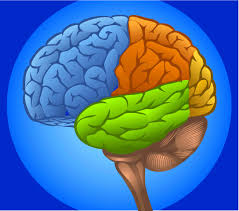
Did you know that girls’ brains are different from boys’ brains? In fact, female brains have more synapses (connection) than male brains. Female brains also have a bigger corpus callosum (connecting area between the two hemispheres). And, female brains are approximately 6-10% smaller than the brains of their male counterparts.
Girls use both sides of their brains much more often for activities and their brains develop at a faster rate than boys. Also, their brains process information differently than boys – because girls have language processing neurons on both sides of their brains they are typically earlier readers and writers and it is often easier for them to talk about their feelings. Moreover, they tend to focus on detail, and they have greater sensitivity to noise and tone of voice (especially around the time of puberty).
In stress, girls produce both epinephrine and cortisol to prepare the body for fight or flight AND girls produce an extra chemical called oxytocin (a feel good hormone connected to childbirth), which enhances the need for connection care and the likelihood she will show care taking behaviours towards other girls in stress and she is more likely to choose getting out of a challenging situation vs. fighting.
I find this fascinating and so important to consider when fostering growth and development and one of the greatest tools we can offer girls in understanding themselves is understanding their brains.

We can start by teaching girls about brain health with tips such as wearing a helmet when biking, drinking lots of water, eating nutritious foods to nurture their brain, and getting adequate sleep to allow time for restoration and rejuvenation.
We can also teach girls about the different parts and functions of their brains including:
- brainstem and midbrain – the ‘survival’ or ‘reptilian’ brain responsible for basic body functions like regulating blood pressure and body temperature
- limbic system – the emotional core of the brain, undestanding “painful”, “pleasure”, “safe”, and “dangerous”
- neocortex – the ‘intellectual’ brain and executive functioning skills such as judgment, logic, reasoning, planning, and decision making
Finally, let’s teach girls some interesting facts about brain development such as:
- the brain weighs approximately 3 pounds
- the brain is made up of over 100 billion neurons
- the brain continues to mature and develop until around age 24
- the brain develops from the bottom up: brainstem, midbrain, limbic, and cortex (last)
Girls need to understand and care for their brains – another aspect of who they are!
![]()





